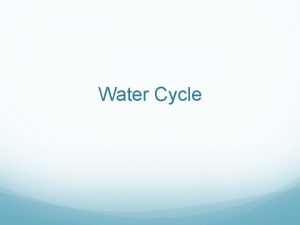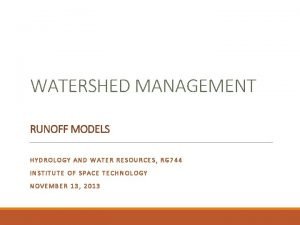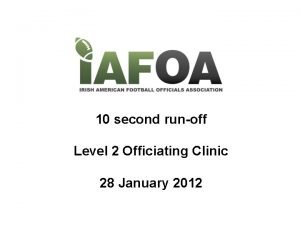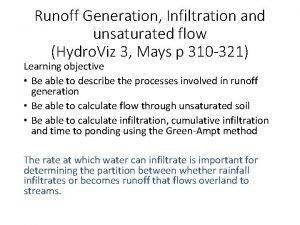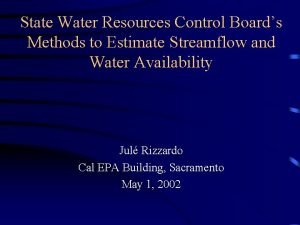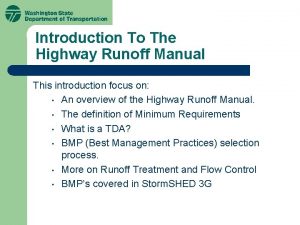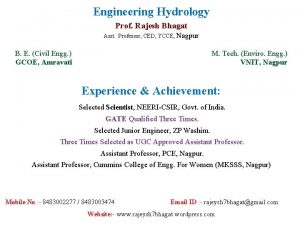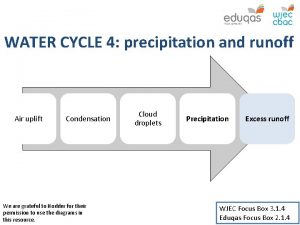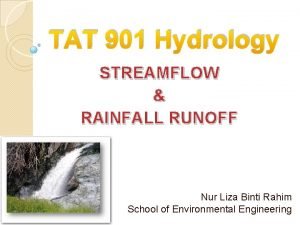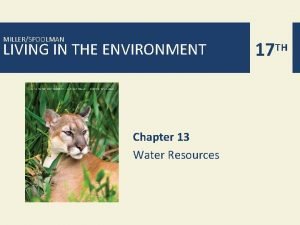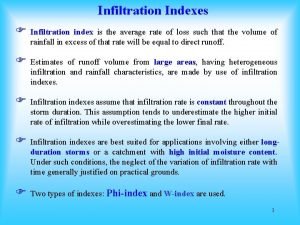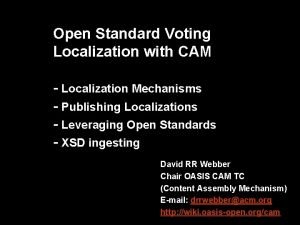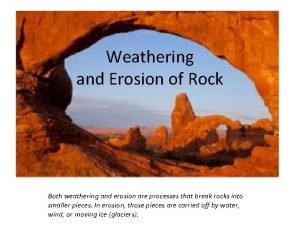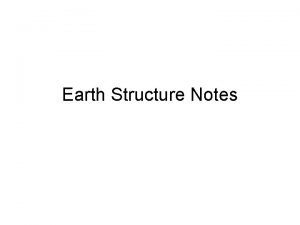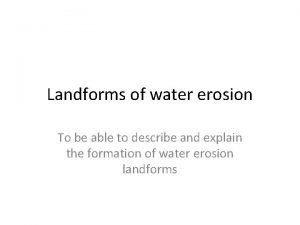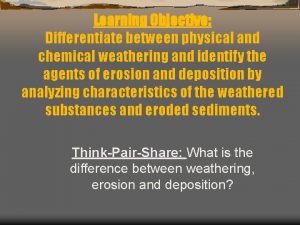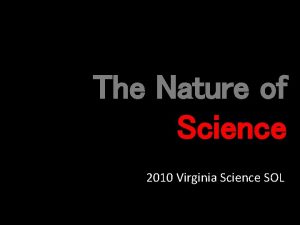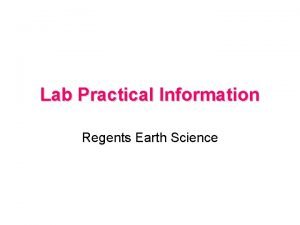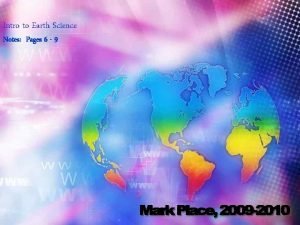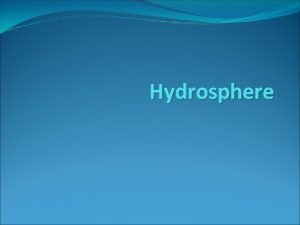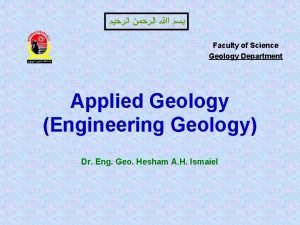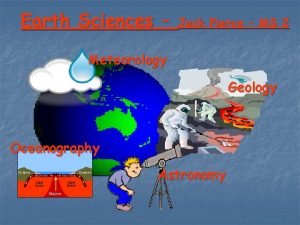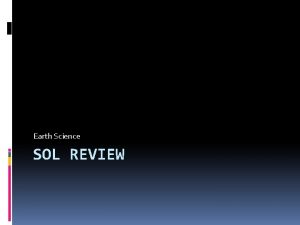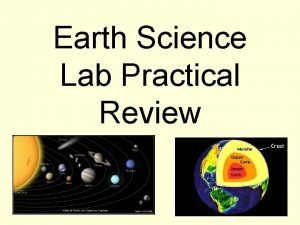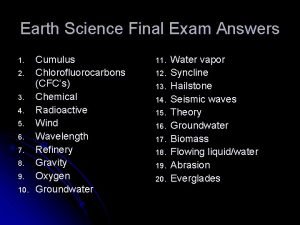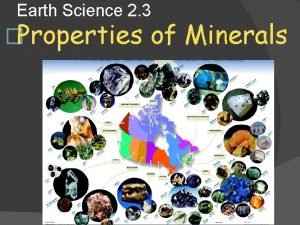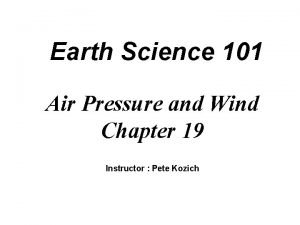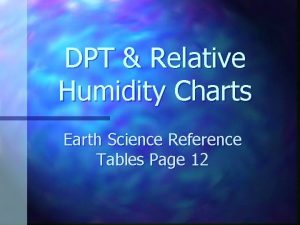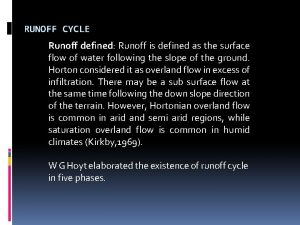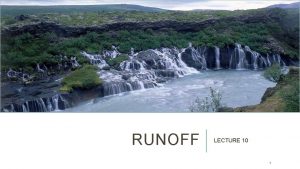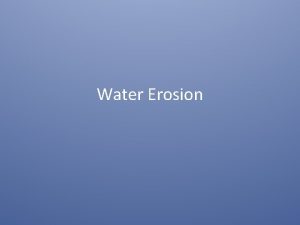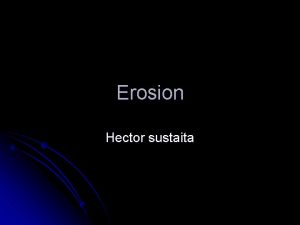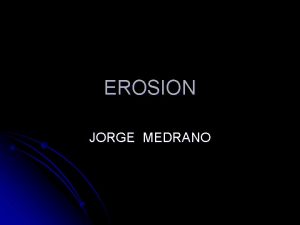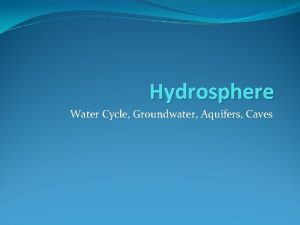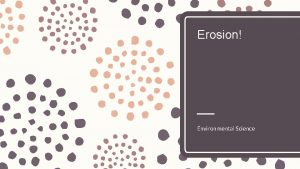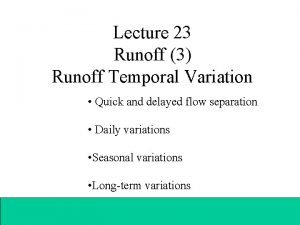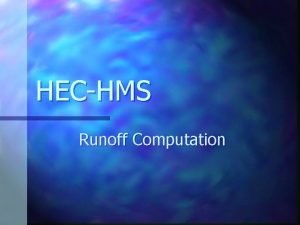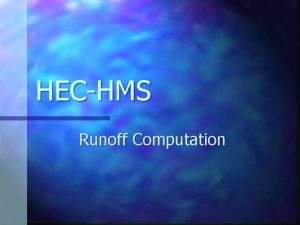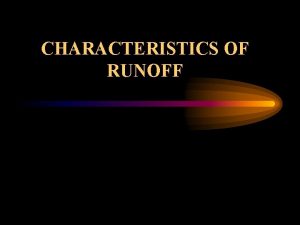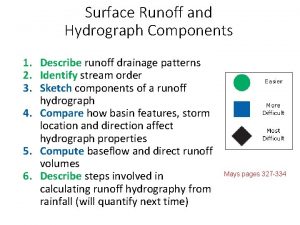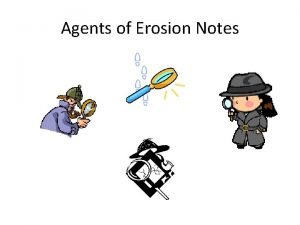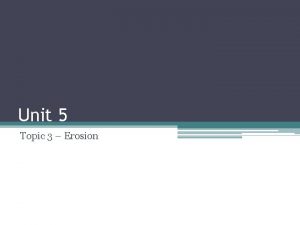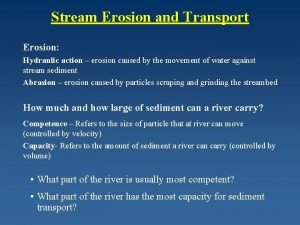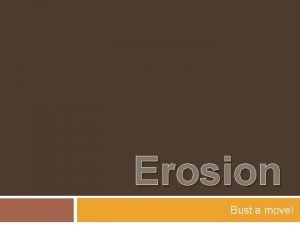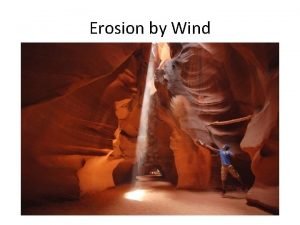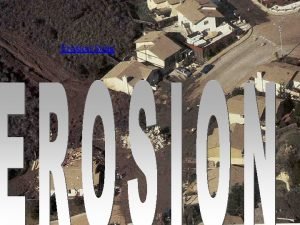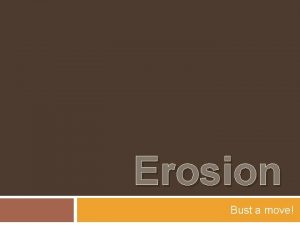Earth Science Notes Water Erosion Water Erosion Runoff















































- Slides: 47

Earth Science Notes Water Erosion

Water Erosion • Runoff – water that is produced by precipitation that does not get absorbed by the earth or evaporated.

Water Erosion • Factors affecting runoff – Incline of land – Vegetation – Type of soil

Water Erosion Water erosion types • Rill erosion – formation of small streams during heavy rain that create channels.

Water Erosion Water erosion types • Sheet erosion – occurs when water is flowing as sheets picks up sediments.

Common types of erosion • Sheet erosion Occurs when thin layers of the topsoil are moved by the force of the runoff water, leaving the surface uniformly eroded. • Rill erosion Caused by runoff water when it creates small, linear depressions in the soil surface. These are easily removed during land tillage. • Gully erosion They are formed from small depressions, which concentrate water and enlarge until several join to form a channel.

Water Erosion Water erosion types • Stream erosion – occurs when stream picks up sediments and carries load down stream. – Suspended load – lightweight sediment – Bed load – heavier sediments

River System Development • River System – all the small rills, creeks, channels and streams that feed into a larger river.


St. Joseph River System

River System Development • Drainage basin – the area of land where water collects and eventually drains from into the larger river – Mississippi river basin, St. Joe River basin

Development of Streams Young Mature Old • Stage does not correspond to how long the stream has existed – A young stream may be many years older than a mature stream

Development of Streams • Young streams – fast moving stream, has a steep channel, more erosion on the bottom then on the sides of the stream.

Development of Streams • Mature streams – slower moving stream like ones that flow through valleys, more erosion on the sides of the stream, usually curvy, meanders.

Development of Streams • Old streams – smooth flowing, very wide, surrounded by flood plain.

Rivers and streams carry sediment

Deposition of Streams and Rivers • Deltas - form at the mouth of large rivers as they empty into the ocean.

Deposition of Streams and Rivers • Alluvial fans - form when water empties into an open flood plain.

Earth Science Notes Ground Water

Hydrosphere • Term that is used to describe all of the earth’s water.

The Water Cycle The constant cycling of water from the hydrosphere to the atmosphere and back • Evaporation (water turning to vapor) • condensation (water vapor turning back to water) • precipitation (water falling back on the earth) • runoff (movement of water over land).

The Water Cycle

Ground Water • Ground Water is apart of the water cycle just like surface water. – Ground water is accumulated by absorbing runoff.

Ground Water • Ground water movement – If water can move through soil it is said to be permeable. – Layers of permeable rock that allow water to move through freely are called aquifers.

The Aquifer

Ground Water • The zone of saturation is the area of rock where all the pores in the rock are filled with water. The upper layer of this zone is called the water table. – The water table is where wells are dug into. – Springs occur where the water table is close to the earth’s surface • Springs are found on a sloping surface.

Ground Water

Earth Science Notes Shorelines

Beaches • Beaches – deposits of sediments that are parallel to the shoreline

Beaches • Composition of beaches – Rock fragments – brownish colored beaches – Quartz grains – white beaches – Seashell fragments – white beaches – Basalt - black beaches

Varying Composition of Beaches

Formation of Beaches • Waves breakdown rocks, minerals and seashells down • Sediments moved by water brush over rocks smoothing them down.

Erosion of Beaches • Caused by currents that run parallel to the shore • Wind and runoff also cause erosion – Sand is very light and easily picked up by the wind

Shoreline Forces • Waves – caused by the wind – Waves that collide with the shore at slight angles produce longshore currents.

Shoreline Forces • Currents - moving water within a larger body of water – Ex: gulf stream

Shoreline Forces • Tides – caused by the pull of the moon – Out going tides carry sediment away from the shoreline

Shoreline Forces • Waves, Currents, and Tides contribute to erosion and contribute to the constant changing of the shoreline.

Shoreline Forces

Erosion of Beaches

Shoreline Features

Shoreline Features • Tombolo – bar connecting island with mainland or other island

Shoreline Features • Headland – point of high land that juts out into sea, a cape

Shoreline Features • Spit – load of sand that is deposited by longshore current

Shoreline Features • Lagoon – shallow pond that a bay becomes when cut off from the sea.

Shoreline Features • Barrier island

Shoreline Features • Bay – inlet of the sea, smaller than a gulf

Summary of Water Erosion • Surface Water – Runoff – Erosion: sheet / rill / stream – Stream development and deposition • Ground Water – Hydrosphere and the water cycle – The Aquifer • Beaches – Shoreline forces, erosion, and features
 Why is earth nicknamed the blue planet
Why is earth nicknamed the blue planet Water and water and water water
Water and water and water water Erosion types
Erosion types Runoff volume
Runoff volume False start 10 second runoff
False start 10 second runoff Runoff generation
Runoff generation Runoff coefficient
Runoff coefficient Highway runoff manual
Highway runoff manual Khosla formula for runoff
Khosla formula for runoff Air uplift
Air uplift What is a runoff sentence
What is a runoff sentence Factors affecting runoff
Factors affecting runoff How to prevent soil runoff on a slope
How to prevent soil runoff on a slope Infiltration index
Infiltration index Who is the
Who is the Instant runoff voting excel template
Instant runoff voting excel template What kind of science
What kind of science The rock
The rock What is the thickest layer of the earth
What is the thickest layer of the earth Physical properties of inner core
Physical properties of inner core Conversion notes brutes en notes standard wisc 5
Conversion notes brutes en notes standard wisc 5 Sheet water erosion
Sheet water erosion Mesa and butte diagram
Mesa and butte diagram A tiny groove in soil made by flowing water
A tiny groove in soil made by flowing water Differentiate between physical and chemical weathering
Differentiate between physical and chemical weathering What letters designate an air mass from the gulf of mexico?
What letters designate an air mass from the gulf of mexico? Earth science sol 2010
Earth science sol 2010 Lab practical review earth science
Lab practical review earth science Earth science part d
Earth science part d Earth science lab practical
Earth science lab practical Earth science grade 9
Earth science grade 9 Dynamic equilibrium earth science
Dynamic equilibrium earth science Hydrosphere
Hydrosphere 4th grade science jeopardy
4th grade science jeopardy Geology earth science definition
Geology earth science definition Environmental science final exam study guide
Environmental science final exam study guide Earth science meaning
Earth science meaning Astronomy definition earth science
Astronomy definition earth science Earth science sol review
Earth science sol review Zone of aeration
Zone of aeration Earth science final exam review
Earth science final exam review Earth science lab practical
Earth science lab practical Earth science final exam answers
Earth science final exam answers What is cleavage in science
What is cleavage in science Mercury barometer
Mercury barometer Earth science reference table dew point
Earth science reference table dew point Branches of geoscience
Branches of geoscience 282 ways to pass the earth science regents
282 ways to pass the earth science regents
